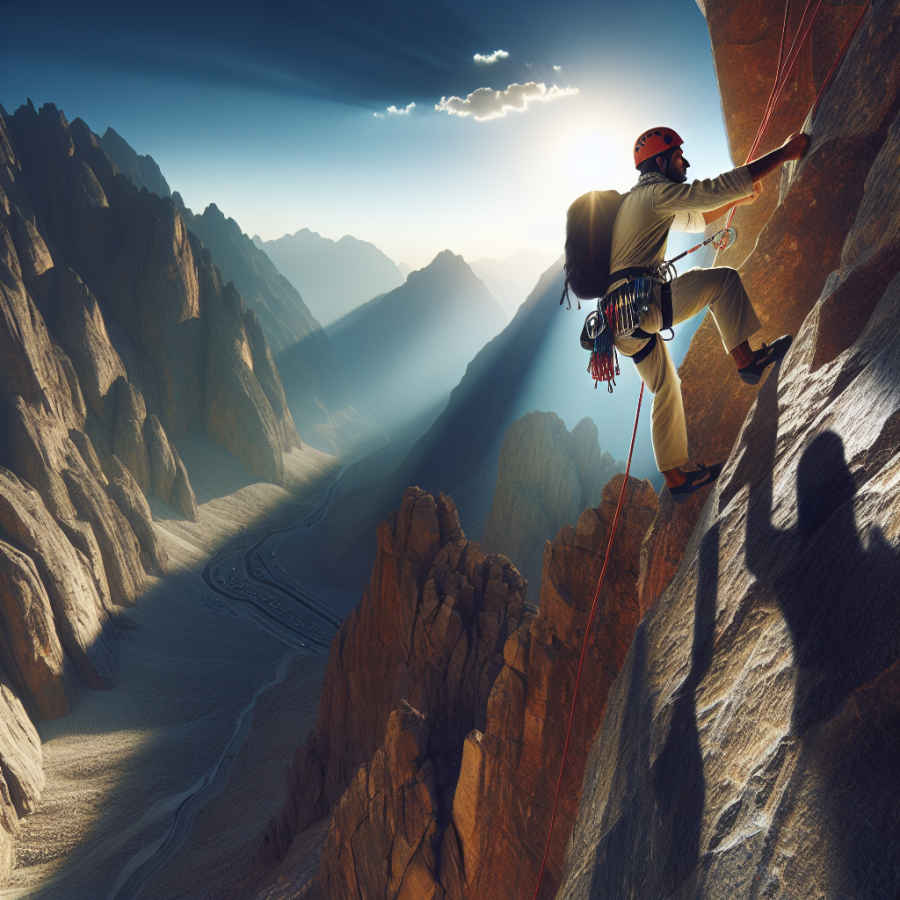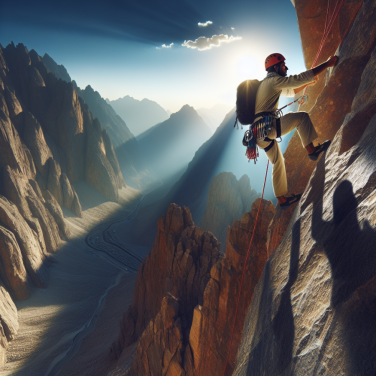Navigating the Perils of Independence: Understanding the Risks of Climbing Alone
Climbing alone has an allure that beckons the adventurous spirit. It offers an opportunity for introspection, personal challenge, and a unique communion with nature. However, it's imperative to recognize that ascending solo magnifies the inherent risks of climbing. Those who choose to climb without the physical and moral support of companions must prepare diligently, acknowledging and mitigating the dangers that solitude on the mountain presents.
One of the first risks solo climbers face is the absence of immediate aid in case of an accident. While climbing in a group, if someone were to fall or become injured, there would be others to provide help or call for a rescue. A lone climber has only their resources to depend on, making self-rescue skills paramount. It's critical for solo climbers to have a profound understanding of emergency procedures, first aid, and the limitations of their gear and abilities.
Isolation also tests a climber's psychological stamina. The silence that may be a balm for the soul on good days can turn into a pressing challenge when things go wrong. The lack of external encouragement to push forward or the voice of reason to advise caution can lead to poor decision-making. It is therefore essential to develop strong mental preparedness and the ability to stay calm and rational when one must make consequential decisions alone.
Navigation is another concern. Climbing partners often share the route-finding responsibilities, cross-checking decisions to ensure the chosen path is safe and feasible. Solo climbers bear this responsibility entirely on their own, meaning a single misstep in navigation can lead to perilous situations. Advanced planning, studying routes thoroughly, and employing technology like GPS devices can help mitigate these risks, though they can never be fully eliminated.
The physical toll of climbing without partners is also more substantial when you're on your own. Carrying all necessary equipment, managing ropes, and setting up camps drains energy at an accelerated rate. This can lead to exhaustion, which in turn impairs judgment and physical performance, increasing the likelihood of mistakes that could have severe consequences.
Furthermore, there's no one to check your gear and decisions. In group climbing, partners can offer feedback and catch potential equipment failures or errors in judgment before they become critical. Solo climbers must maintain a discipline of double or even triple-checking their equipment and decisions. This includes assessing whether their physical and mental state is appropriate to continue or if it's better to turn back.
Weather poses another serious hazard to the solo climber.
Read also:
Today's LSU Women's Basketball Game Time Revealed
Embracing Solitude at Altitude: The Lure of Solo Climbing
Solo climbing, the purest and most solitary branch of mountaineering, offers a unique psychological and physical experience for those who undertake it. Far above the safety nets of society and the companionship of fellow climbers, individuals find themselves in a space where only their skills, judgment, and mental fortitude stand between them and the summit.
Embracing solitude at altitude is not a decision climbers make lightly. It is an intentional foray into a world where one's connection with the mountain becomes incredibly intimate. Each handhold, foothold, and the rhythm of breath becomes a personal dialogue with the rock or ice face. The solo climber must rely on an intense level of concentration, undistracted by partners, allowing for a deep immersion into the climb that is rarely achievable when climbing as a team.
The lure of solo climbing is multifaceted. It offers an unrivaled sense of freedom—one where climbers are free to make their own decisions, set their own pace, and choose their own route without compromise. It's also about self-reliance and the satisfaction that comes from knowing one's capabilities and limitations without the comfort of a safety net.
However, with the thrills of solo climbing come significant risks. Soloists face the stark reality that any minor mishap can quickly escalate into a life-threatening situation. The absence of a partner means there is no one to double-check gear placements, belay through difficult sections, or call for help in case of an emergency. Thus, climbers who venture into solo ascents must be exceptionally skilled, physically fit, and equipped with a mindset for risk management.
The perils of solo climbing are also psychological. The isolation can become oppressive; it requires an individual to confront their fears without the moral support usually provided by fellow climbers. Decision-making skills are constantly tested, and maintaining motivation can sometimes be as challenging as the climb itself. It is a true test of mental endurance as much as it is of physical capability.
To mitigate these dangers, many solo climbers still take precautions such as carrying a personal locator beacon, informing others of their route and expected return time, and staying within the bounds of their experience level. Some may practice 'roped soloing,' where they utilize ropes and anchors for self-belay. These techniques provide a margin of safety, but they can never eliminate the inherent risks of solo climbing.
The inner journey of solo climbing can be as profound as the physical ascent.




